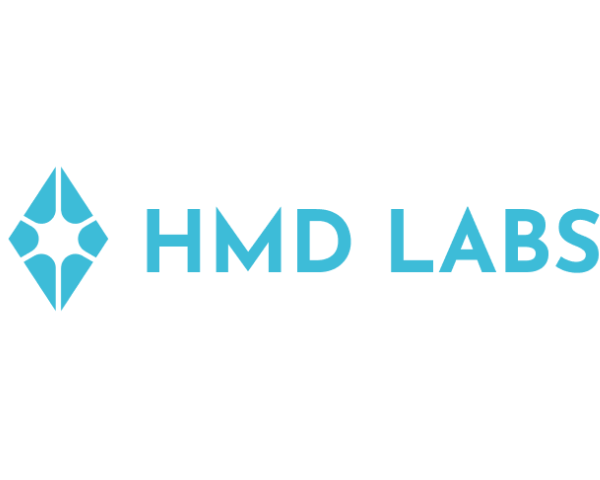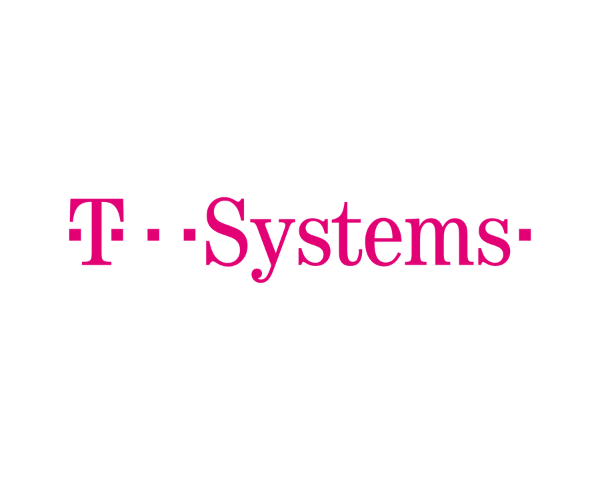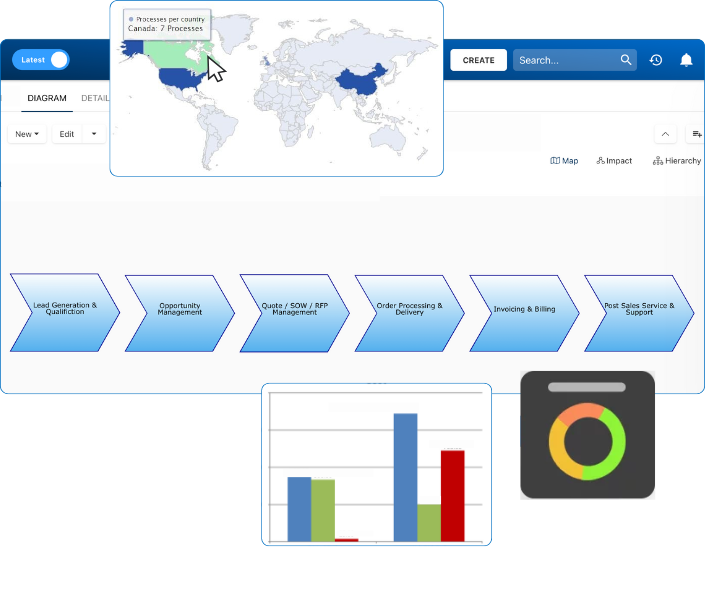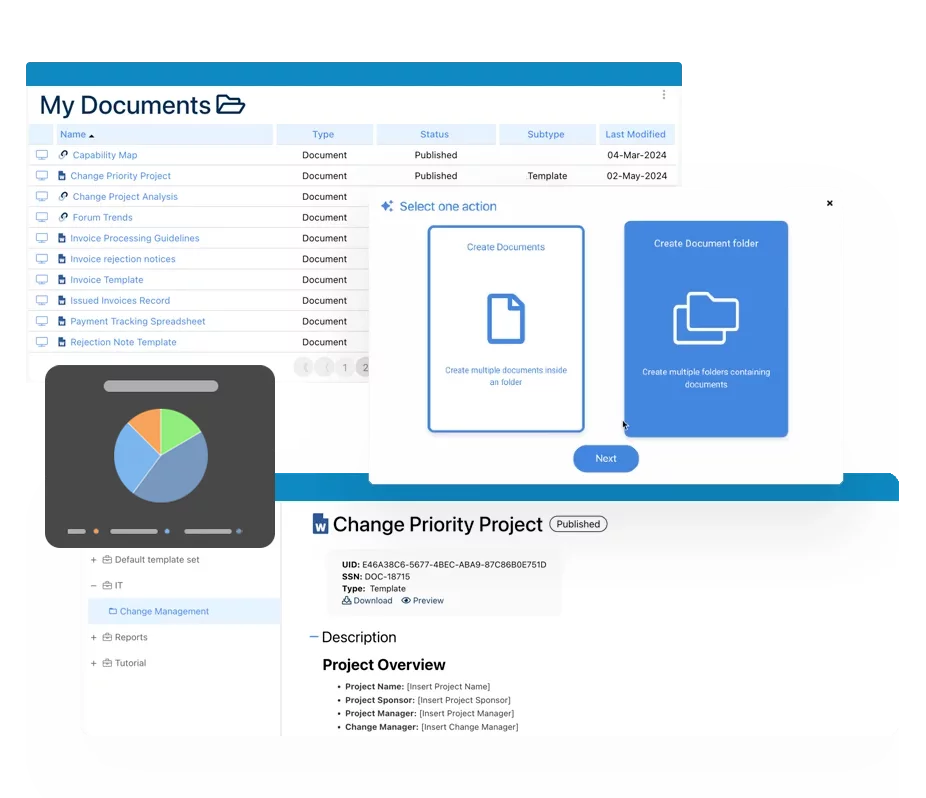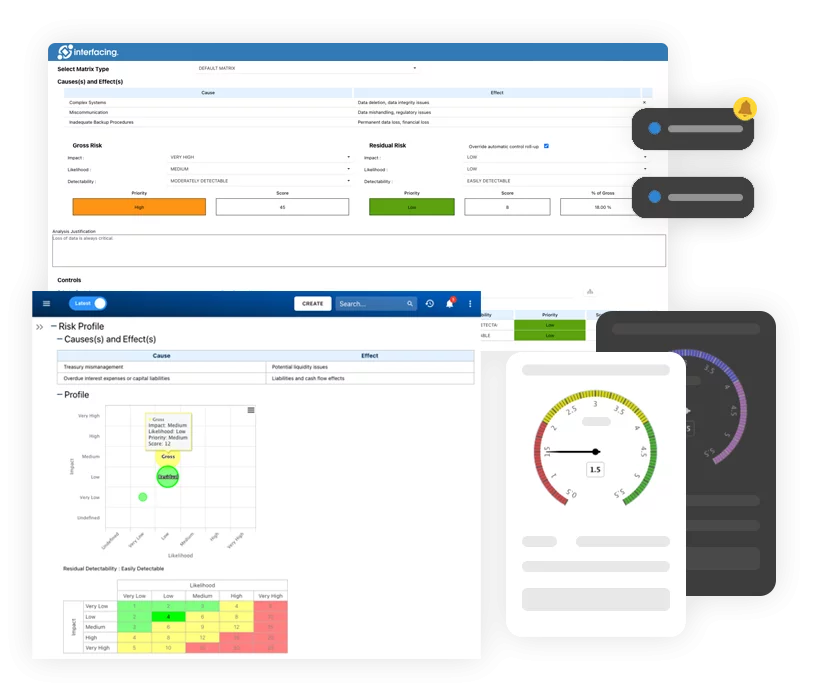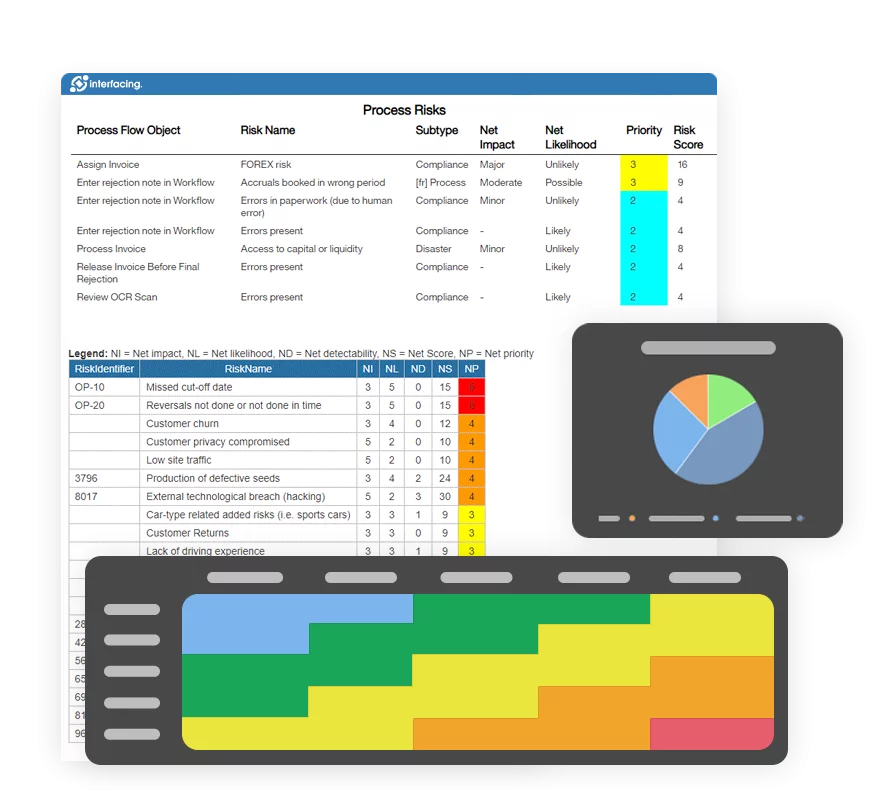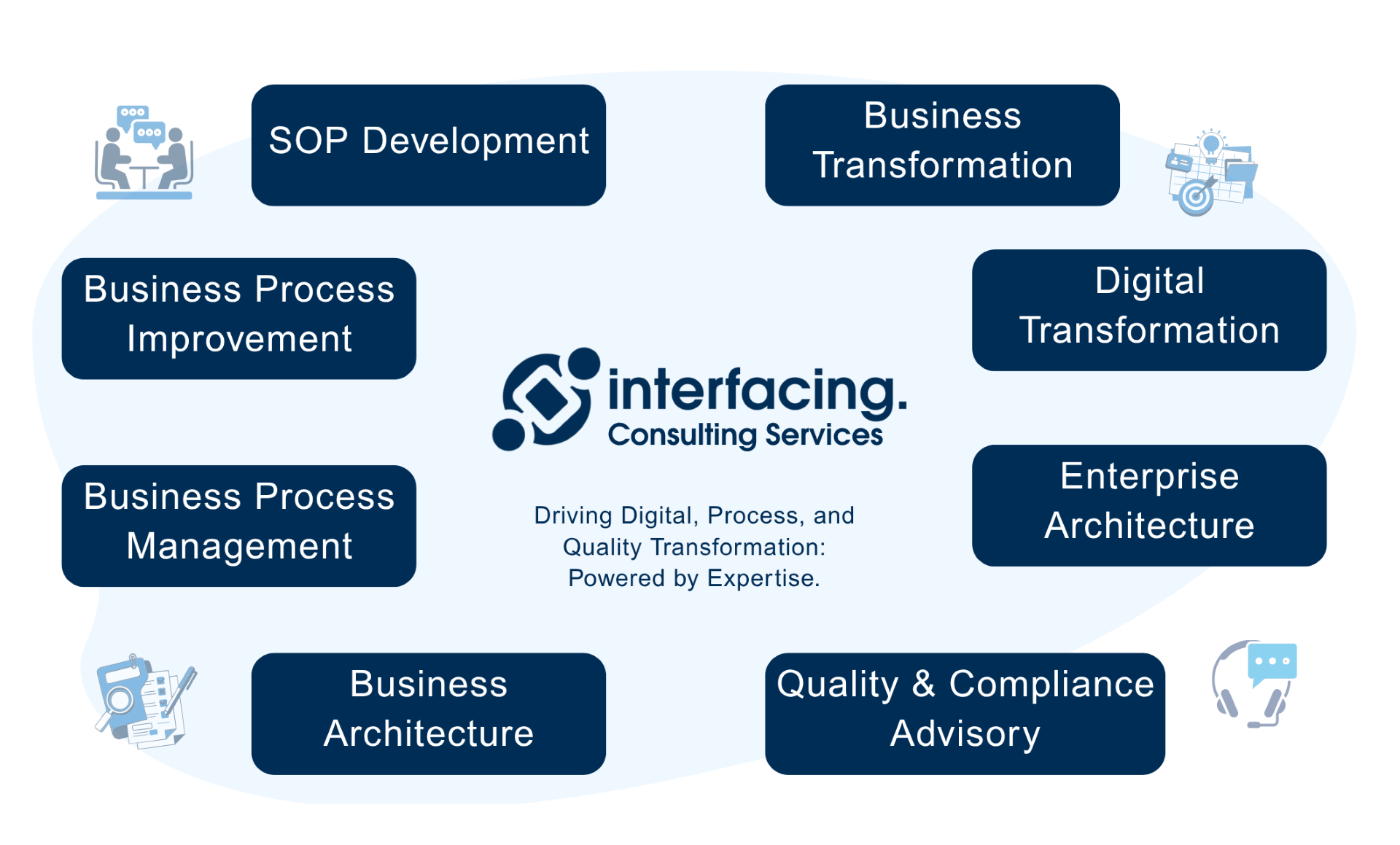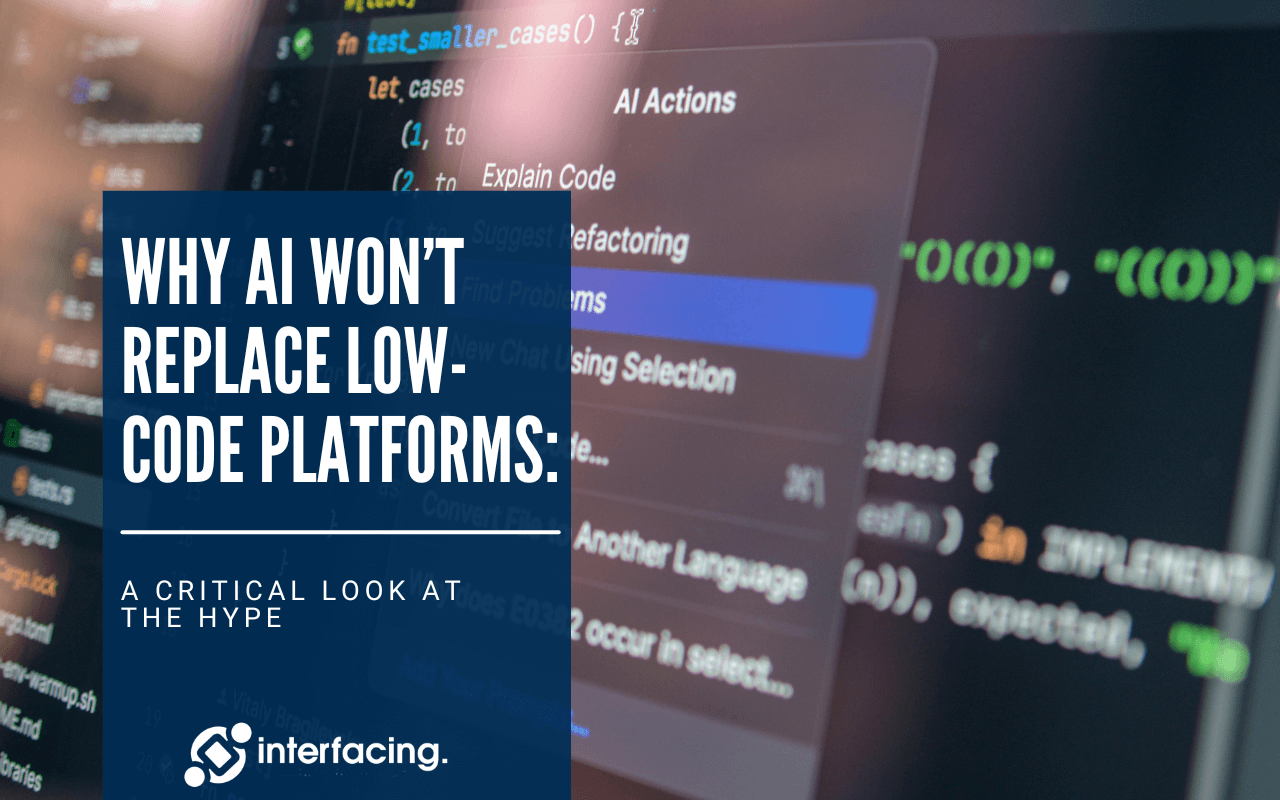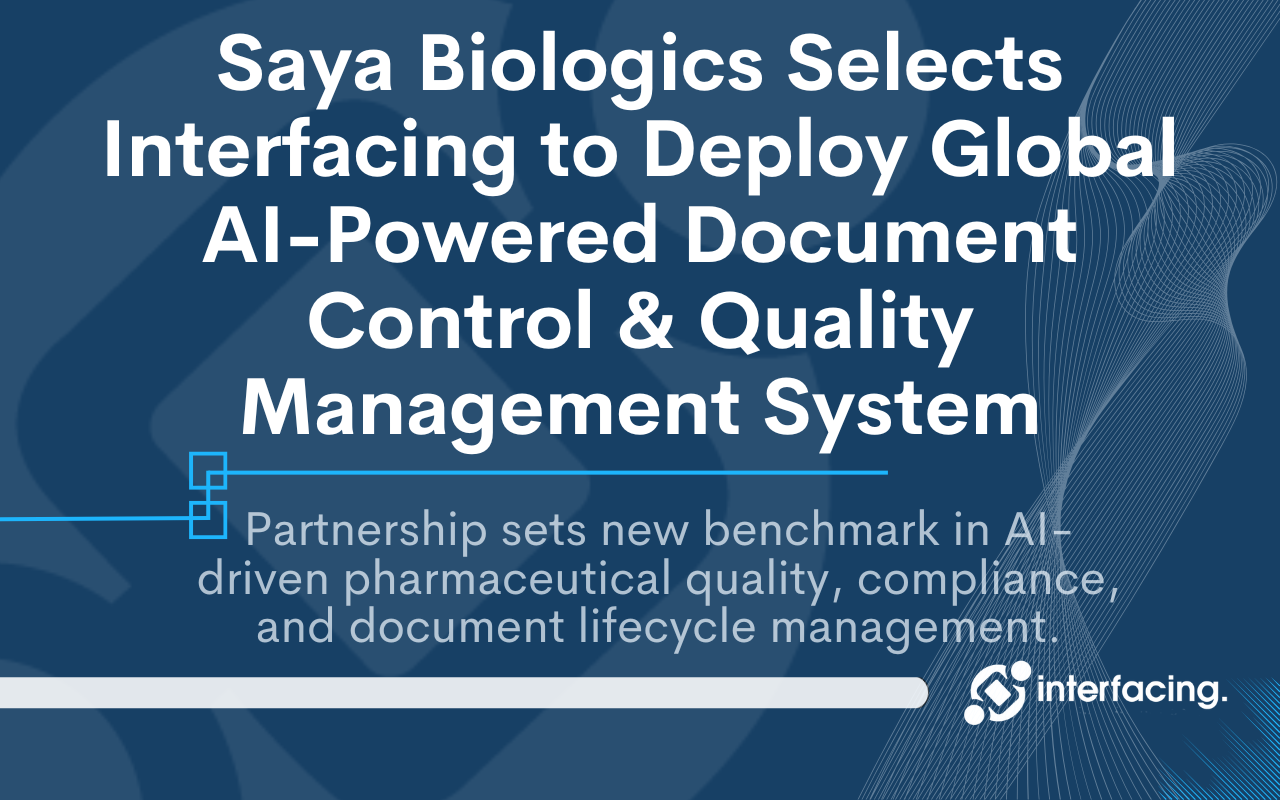Artificial intelligence is changing how organizations build and deliver digital solutions, but one myth continues to spread through leadership conversations: the belief that AI will eventually replace low-code platforms entirely.
This narrative sounds plausible until you start interrogating it. If AI can generate full application logic, automate workflows, and write front-end and back-end code on demand, why would low-code platforms remain relevant?
The answer is simple: building code is not the same as building systems.
And building systems is not the same as managing them responsibly over time.
Low-code platforms are not just “faster ways to write code.” They are structured environments designed for governance, maintainability, lifecycle management, architecture, and collaboration between business and technical teams. AI does not replace these foundational needs. It actually increases the need for them.
This article unpacks why, through rigorous logic testing, counterpoints, and a clear-eyed look at how AI and low-code fit together in modern organizations.
The Misconception: “AI Can Build Apps, So Low-Code Is Obsolete”
Let’s challenge the assumption directly.
Assumption: AI can generate code, therefore AI replaces low-code.
Reality: Low-code platforms solve problems AI cannot — and is not designed to.
AI can write code.
AI cannot manage:
governance
architecture
versioning
compliance
long-term maintainability
documentation integrity
upgrade consistency
system-wide dependencies
AI is not a platform.
AI is a generator.
Low-code is a framework, a structure, and a governance layer.
You can replace manual coding with AI, but you cannot replace the architectural role that low-code plays inside an enterprise ecosystem.
AI Accelerates Development, But It Also Accelerates Technical Debt
There’s no denying that AI has shattered old assumptions about how quickly software can be produced. A task that once took a developer several hours can now be drafted in seconds. This speed is impressive, even transformative, but it comes with a hidden cost that many organizations overlook.
AI-generated code tends to be inconsistent. Each version may differ subtly depending on the prompt, the model’s interpretation, or even the moment in time it was generated. What works today might not work after a minor change tomorrow. The logic may be functional, yet difficult to trace; efficient, yet misaligned with architectural standards; correct, yet incompatible with the next update. AI doesn’t generate systems, it generates fragments.
Over time, these fragments accumulate into what every CIO fears: technical debt. Not the ordinary kind that builds slowly over years, but technical debt created at high velocity. When dozens or hundreds of AI-generated components begin interacting without a unified framework, the complexity becomes unmanageable. Maintenance becomes guesswork. Documentation becomes obsolete the moment it’s written. And teams inherit a codebase with no shared logic, no predictable patterns, and no way to ensure consistent behavior across the application.
This is exactly why low-code platforms remain essential. Instead of allowing AI to generate free-form structures, low-code environments provide the architectural backbone that keeps everything coherent. They enforce reusable components, standardized models, naming conventions, permissions, lifecycle governance, and deployment pathways. In other words, they prevent the chaos that unbounded AI-generated code inevitably creates.
AI may be incredibly fast, but low-code is what makes that speed sustainable.
Without structure, acceleration becomes a liability. With structure, acceleration becomes a multiplier.
AI Hides Complexity — It Does Not Eliminate It
One of the biggest traps in AI enthusiasm is believing it “solves complexity.”
AI simplifies the appearance of development, not the underlying reality.
When complexity is hidden rather than managed, organizations face:
a) Architectural Blind Spots
If AI generates logic, who understands the architecture months later?
How does the next team maintain it?
How does IT audit it?
Hidden complexity becomes a liability.
b) Change Risk
AI-generated code breaks easily when business rules evolve.
Without standardized building blocks, one change triggers cascading failures.
c) Compliance Gaps
AI-generated logic does not automatically:
create audit trails
enforce approvals
maintain signatures
track changes
validate workflows
document design rationale
Low-code platforms do.
d) Lost Knowledge
AI does not create shared understanding.
Low-code enforces it.
AI Assistants Are Powerful; But They Are Not Engineers
AI tools can:
- Generate boilerplate code
- Refactor functions
- Create test cases
- Suggest architectures
- Summarize requirements
- Write documentation
- Build UI scaffolding
- Translate between languages
But they cannot:
- Ensure system viability
- Govern lifecycle changes
- Evaluate long-term risk
- Document business logic
- Enforce enterprise standards
- Own architecture
- Defend design choices
- Guarantee determinism
- Operate within regulatory boundaries
AI is a collaborator. Low-code is the foundation.
Low-Code Platforms Solve Problems AI Can’t Touch
AI is excellent at speed. Low-code is excellent at structure.
And in enterprise environments, structure consistently beats speed over the long term.
When organizations build applications, they’re not merely trying to produce functionally correct code. They’re trying to create systems that can be governed, maintained, audited, scaled, and understood by multiple contributors across multiple years.
This is the domain where low-code platforms excel, and where AI, on its own, simply cannot operate.
Take governance, for example. Low-code platforms enforce the rules that keep systems predictable and safe: approval workflows, role-based permissions, retention and archival rules, audit trails, versioning, and the kind of traceability that regulators and internal auditors expect. AI can generate code in seconds, but it cannot enforce or maintain the structures that surround that code.
Compliance is another area where low-code outperforms AI by design. Whether an organization works in banking, manufacturing, tech, or public service, there is always a need for reliability and reproducibility. AI’s outputs are probabilistic by nature, meaning you cannot guarantee the same result twice. Compliance depends on determinism, a standard low-code enforces through predefined components, controlled logic, and governed change cycles.
Low-code also solves a people problem that AI cannot: collaboration.
When business teams and IT need to co-create workflows or automate processes, low-code provides a shared visual language that both sides can understand. AI-generated code, by contrast, is accessible primarily to technical users. It may accelerate development, but it widens the gap between builders and subject matter experts.
Then there’s integration — the backbone of any enterprise system. Low-code platforms manage connectors, orchestrations, middleware, and the entire integration fabric that lets systems communicate safely. AI can generate snippets of integration code, but it cannot understand or govern the architectural context in which that code must live.
And finally, lifecycle management. Applications evolve, sometimes daily. Low-code platforms manage this evolution by controlling versions, coordinating deployments, monitoring runtime states, and updating the components that keep systems functional. AI has no inherent concept of lifecycle; it merely generates new artifacts.
The conclusion is simple: AI helps create. Low-code helps sustain.
And sustainability is where true enterprise value is created.
The Multi-Layer Reality: Code Is Only 10 Percent of Enterprise Development
There’s a misconception, especially among non-technical decision makers, that application development is mostly about writing code. But in practice, code creation is the smallest layer of the process. The real work happens around it.
Before a single line of logic is written, teams must understand the business process, align stakeholders, document requirements, evaluate risks, define architecture, map dependencies, and design user interactions. Once the code exists, it must be tested, validated, approved, deployed, monitored, updated, and eventually replaced. Every change requires impact analysis, documentation updates, version control, regression testing, and collaboration between business and technical teams.
These layers represent roughly 90 percent of the application lifecycle, the 90 percent that AI cannot manage.
AI can accelerate isolated tasks within this ecosystem: generating a function, drafting documentation, or suggesting tests. But it cannot structure the ecosystem itself. It cannot enforce governance, maintain architecture, coordinate teams, or preserve long-term maintainability.
Low-code platforms are built precisely for this broader reality. They provide the scaffolding that supports the entire lifecycle , not just the act of writing code. They give organizations predictable, governed, repeatable processes that keep systems alive long after the initial build.
This is why AI cannot replace low-code:
AI accelerates the part that’s easiest to automate.
Low-code stabilizes everything that actually makes enterprise systems work.
The future belongs to environments where both coexist, AI for acceleration, low-code for discipline, because without structure, speed becomes a liability.
Citizen Developers Still Need Guardrails, Not Just AI
One of the promises of digital transformation is enabling business teams to build their own workflows and applications. Low-code platforms made this possible by creating safe, governed environments where non-technical users can contribute without creating operational risk.
AI introduces new acceleration into this model, but without governance, that speed quickly becomes dangerous.
When a citizen developer uses AI directly to generate application code, they’re producing logic they cannot fully evaluate. They rely on the appearance of correctness, not the assurance of maintainability, security, or compliance. AI-generated logic might work today, but a future process change, API update, or data model shift could break it, and non-technical builders have no way to safely diagnose or fix those issues.
This is where low-code platforms continue to play an indispensable role. They give organizations guardrails that protect innovation rather than restrict it. Templates ensure consistency, reusable components reduce risk, and visual modeling creates clarity. Every change is versioned, every workflow is governed, and every component is built on a stable architectural foundation that the platform maintains over time.
AI can make citizen developers dramatically faster.
Low-code ensures they don’t break the system in the process.
It’s not a choice between empowering business teams and protecting the enterprise. Low-code platforms allow both to exist simultaneously, and AI amplifies this collaboration when it is integrated into the platform, not used as a standalone tool.
The Future Is AI-Accelerated Low-Code, Not AI-Only Development
Looking ahead, the most successful organizations will not be the ones that try to replace low-code with AI, but the ones that recognize how the two technologies complement each other.
AI is already reshaping how digital assets are created. It can draft workflows, generate forms, analyze data, propose optimizations, and even convert legacy documentation into structured processes. But these accelerations only produce sustainable value when they occur inside an environment that manages architecture, quality, consistency, and lifecycle health.
Low-code platforms provide that environment, a unified system where every artifact generated by AI is stored, governed, versioned, reviewed, and contextualized within the broader digital ecosystem. Instead of scattering AI-generated code across repositories, organizations keep everything in one place, with one logic model, one governance layer, and one set of lifecycle controls.
This is the real transformation:
AI removes friction.
Low-code provides structure.
Together, they create a scalable model for digital delivery that neither could achieve alone.
In this future, business teams can generate workflows with plain language, IT can focus on architecture and oversight rather than repetitive coding, and organizations gain the best of both speed and stability. It’s an approach that respects the strengths of AI while acknowledging its limitations, and it mirrors the evolution of every major technology wave: automation does not eliminate the platform; it elevates it.
When AI accelerates creation and low-code guarantees durability, enterprises finally acquire what they’ve always needed: a fast, safe, maintainable path to continuous digital transformation.
What Organizations Should Actually Do Next
Here is the practical guidance:
- Don’t hand development over to AI without a platform. You’ll accumulate technical debt quickly.
- Use AI inside low-code platforms, not instead of them. Combine speed and structure.
- Standardize your application architecture. Low-code enforces what AI cannot.
- Create safe paths for citizen developers. AI speeds them up; low-code protects them.
- Treat AI as augmentation, not automation. Human oversight remains essential.
- Build long-term maintainability into every decision. AI-generated code is fragile; low-code components endure.
AI-generated code is fragile; low-code components endure.
How Interfacing Helps
Interfacing’s AI-enhanced Integrated Management System (IMS) brings these principles together:
A Low-Code Rapid Application Development module that ensures governance, structure, and maintainability
AI tools that accelerate documentation, modeling, and workflow creation
Full audit trails, approvals, digital signatures, and controlled versioning
Unified process, quality, risk, and document management
Safe environments for both IT and citizen developers
Enterprise-wide standardization built into every application
This combination reflects the reality of modern application development:
AI brings the speed.
Low-code brings the discipline.
Interfacing brings them together.
Why Choose Interfacing?
With over two decades of AI, Quality, Process, and Compliance software expertise, Interfacing continues to be a leader in the industry. To-date, it has served over 500+ world-class enterprises and management consulting firms from all industries and sectors. We continue to provide digital, cloud & AI solutions that enable organizations to enhance, control and streamline their processes while easing the burden of regulatory compliance and quality management programs.
To explore further or discuss how Interfacing can assist your organization, please complete the form below.

Documentation: Driving Transformation, Governance and Control
• Gain real-time, comprehensive insights into your operations.
• Improve governance, efficiency, and compliance.
• Ensure seamless alignment with regulatory standards.

eQMS: Automating Quality & Compliance Workflows & Reporting
• Simplify quality management with automated workflows and monitoring.
• Streamline CAPA, supplier audits, training and related workflows.
• Turn documentation into actionable insights for Quality 4.0

Low-Code Rapid Application Development: Accelerating Digital Transformation
• Build custom, scalable applications swiftly
• Reducing development time and cost
• Adapt faster and stay agile in the face of
evolving customer and business needs.
AI to Transform your Business!
The AI-powered tools are designed to streamline operations, enhance compliance, and drive sustainable growth. Check out how AI can:
• Respond to employee inquiries
• Transform videos into processes
• Assess regulatory impact & process improvements
• Generate forms, processes, risks, regulations, KPIs & more
• Parse regulatory standards into requirements

Request Free Demo
Document, analyze, improve, digitize and monitor your business processes, risks, regulatory requirements and performance indicators within Interfacing’s Digital Twin integrated management system the Enterprise Process Center®!
Trusted by Customers Worldwide!
More than 400+ world-class enterprises and management consulting firms






















